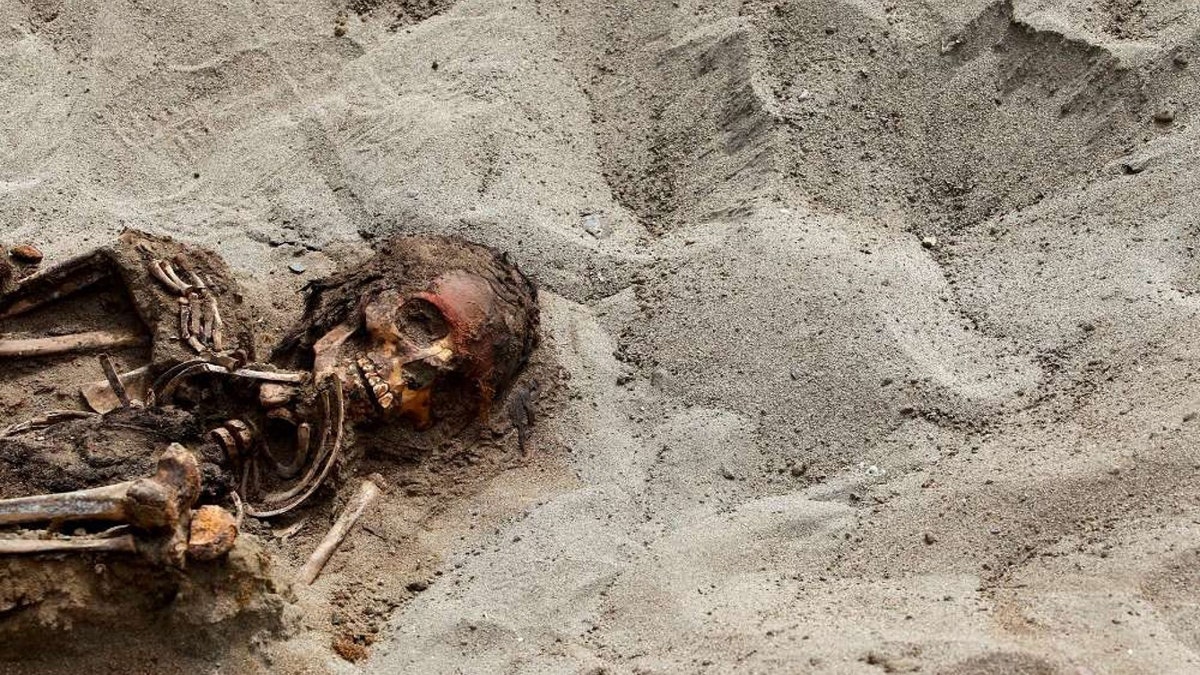
File photo - Archaeologists found the remains of 42 children and more than 70 young llamas in 2011, near Trujillo, Peru. By 2016 the number had grown to over 130 children and 200 young llamas. (REUTERS)
Ancient writings often describe how Celts in the Iron Age would remove the heads of their enemies to keep as trophies. Impressive, sure, and a great conversation piece at parties, but how would they keep the heads from rotting? Apparently, Celts (ancient and medieval Celtic speakers) would embalm the severed heads to solve this problem, and researchers may have recently figured out how they did it.
Well over 100 fragmented human skulls were found buried in an open area of Le Cailar, France– a 2,500 year–old town on the Rhone River. The skulls, which were discovered among ancient weapons in the walled village, date back to the 3rd century B.C., when Le Cailar was a Celtic settlement. The skulls had cuts, indicating decapitation, as well as tongue and brain removal– signs that they may have been put on display until the area was covered in dirt around 200 BC.
After grinding up a few pieces of skull fragments, researchers from the University Paul–Valery Montpellier analyzed the dust. The results turned up with cholesterols and fatty acids that may have come from the bones themselves, but the research team also found evidence of the compound produced when plant oils break down after being exposed to extreme heat. The team believes that the heads may have possibly been dipped in cedar oil or a local pinacea oil after the brain was removed for embalming. They also found that pinacea oil was reapplied to the head several times over the years.
LONG-LOST TALES OF MERLIN AND KING ARTHUR DISCOVERED IN MYSTERIOUS MEDIEVAL MANUSCRIPTS
Susan Johnston, a professorial lecturer in Anthropology at Columbian College of Arts and Sciences, told Fox News that much had been written about the Iron Age Celts over the centuries that couldn’t be taken at face value because they weren’t based on archeological evidence, and had simply been based on legend. This new evidence, however, helps verify some of what has been written about the embalmed heads.
“When [the older writings] describe something like, in this case, using cedar oil on preserved heads, it's hard to know whether we should take that as true or not,” she said. “So this is archaeological evidence that at least one thing that was described might have been right, though I did wonder whether the resin reported might have been used to stick the heads in place rather than to preserve them, though it might have had that effect as well.”
Johnston also says that while historians don’t know why the Iron Age Celts kept heads, the reasons may have changed over time.
“If you look at anthropological literature on other cultures who, in the past, also collected and kept heads, they did it for all kinds of reasons,” she added. “Keeping heads might mean different things at different times– it could have been to brag or honor, it could have been enemies or ancestors, or it could have been several things at once.”
ANCIENT CARVED 'DRUMS' GIVE EXACT STONEHENGE MEASUREMENTS, SAY ARCHAEOLOGISTS
Dr. Daniel Melia, a professor of Celtic studies at UC Berkeley, believes the heads may have been kept for metaphysical reasons.
“My guess is that ancient Celtic speakers had learned that the brain was the controlling feature of the body and ‘spirit’ and that thus control of the head was either magically or metaphorically control of the spirit of the dead person,” he told Fox News. “We cannot know how literally any ancient person might have taken the power of the head, but we do know that even modern cultures can set great store by things that are purely symbolic, such as statues of Robert E. Lee.”
The researchers who analyzed the fragments believe the heads were for the locals to gaze upon as the skulls were found inside Le Cailar, as opposed to outside the town walls where they could be put on display to frighten attackers.
CLICK HERE TO GET THE FOX NEWS APP
The new study can be found in volume 101 in the Journal of Archaeological Science.
